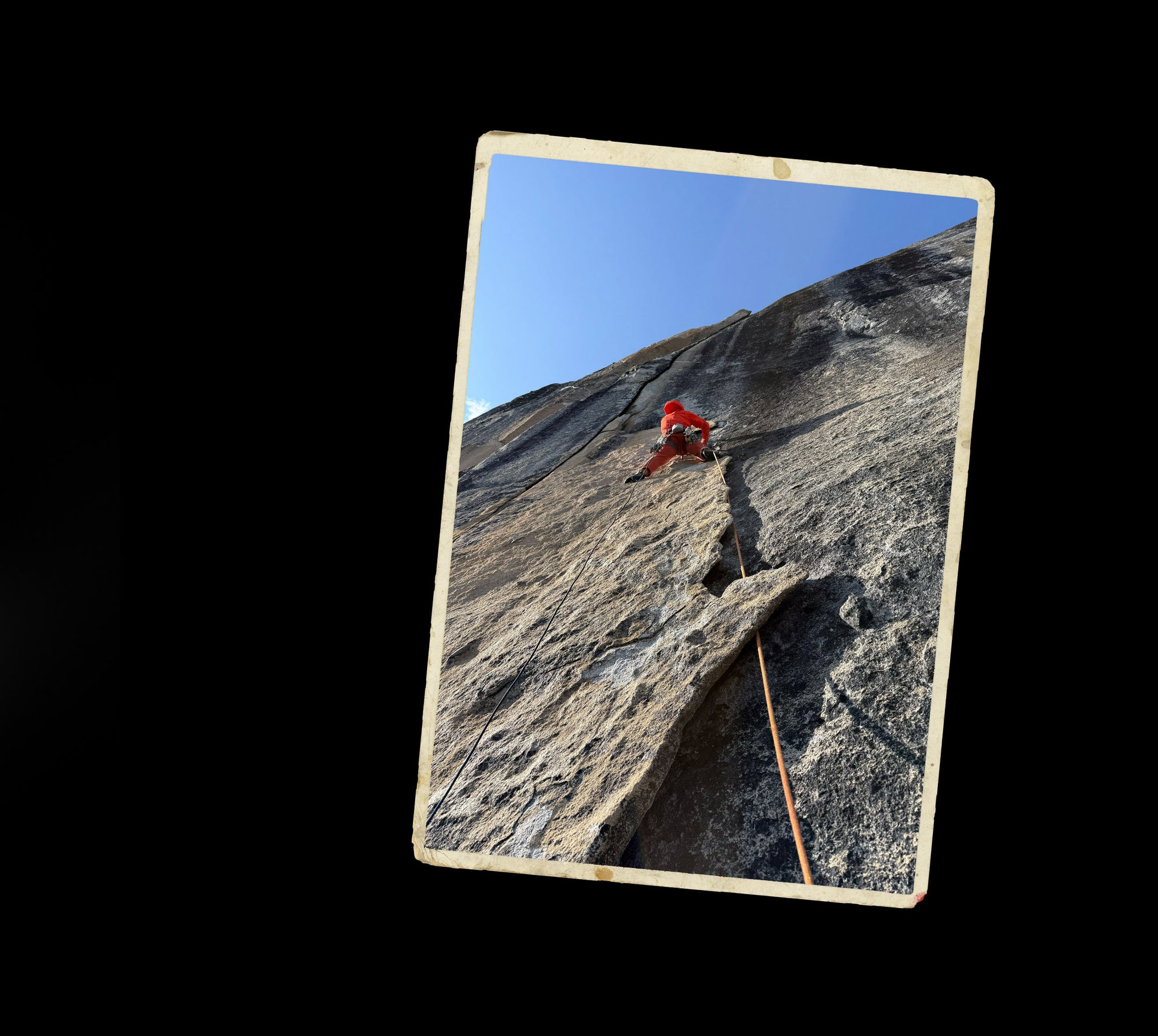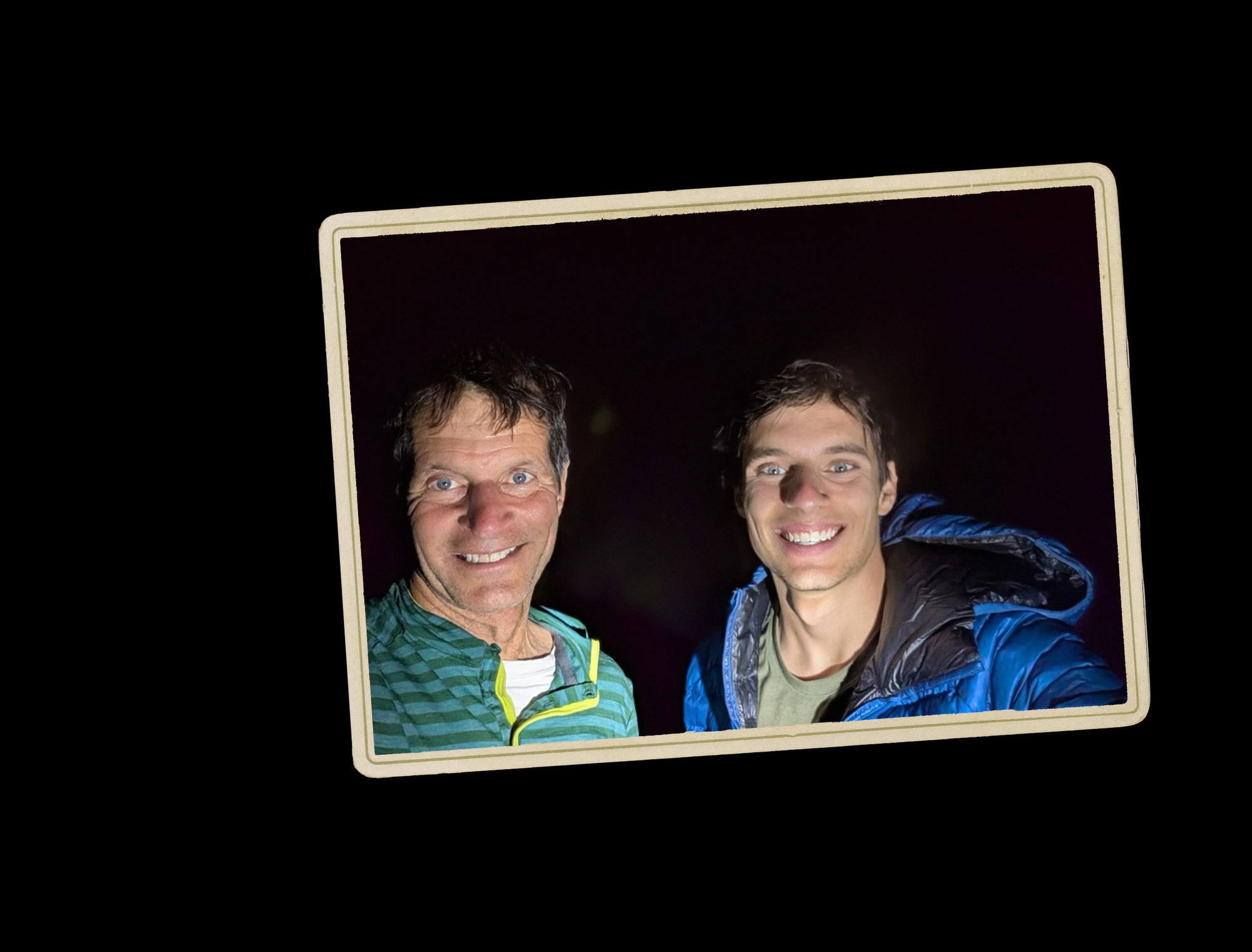If that’s how the day started, though, it couldn’t have gone better after that. Three pitches higher, Chris and I arrived at Beak Flake (13b), the first crux of the route. I surprised myself by onsighting that beautiful pitch with relatively little drama except for a brief moment of crossing up my feet in the upper crux. A pitch higher, the route traverses straight leftward in what the guidebook describes as “loose, scary 5.11” into a 5.12d pitch protected on fixed beaks. Thankfully, those pitches went well, and Chris cleaned them incredibly quickly and efficiently.
Soon enough, we arrived in the massive corner system, and we were once again cruising. Each pitch felt easier than the last, and pretty quickly we’d sent the Coffee Corner (13a) and only had one 13b pitch, the legendary roof traverse, guarding Tower to the People. As I racked up, a thought crossed my mind: I’ve never had a no-falls free ascent of El Cap before. If I can do this pitch, I’ve got a good chance at doing it today.


